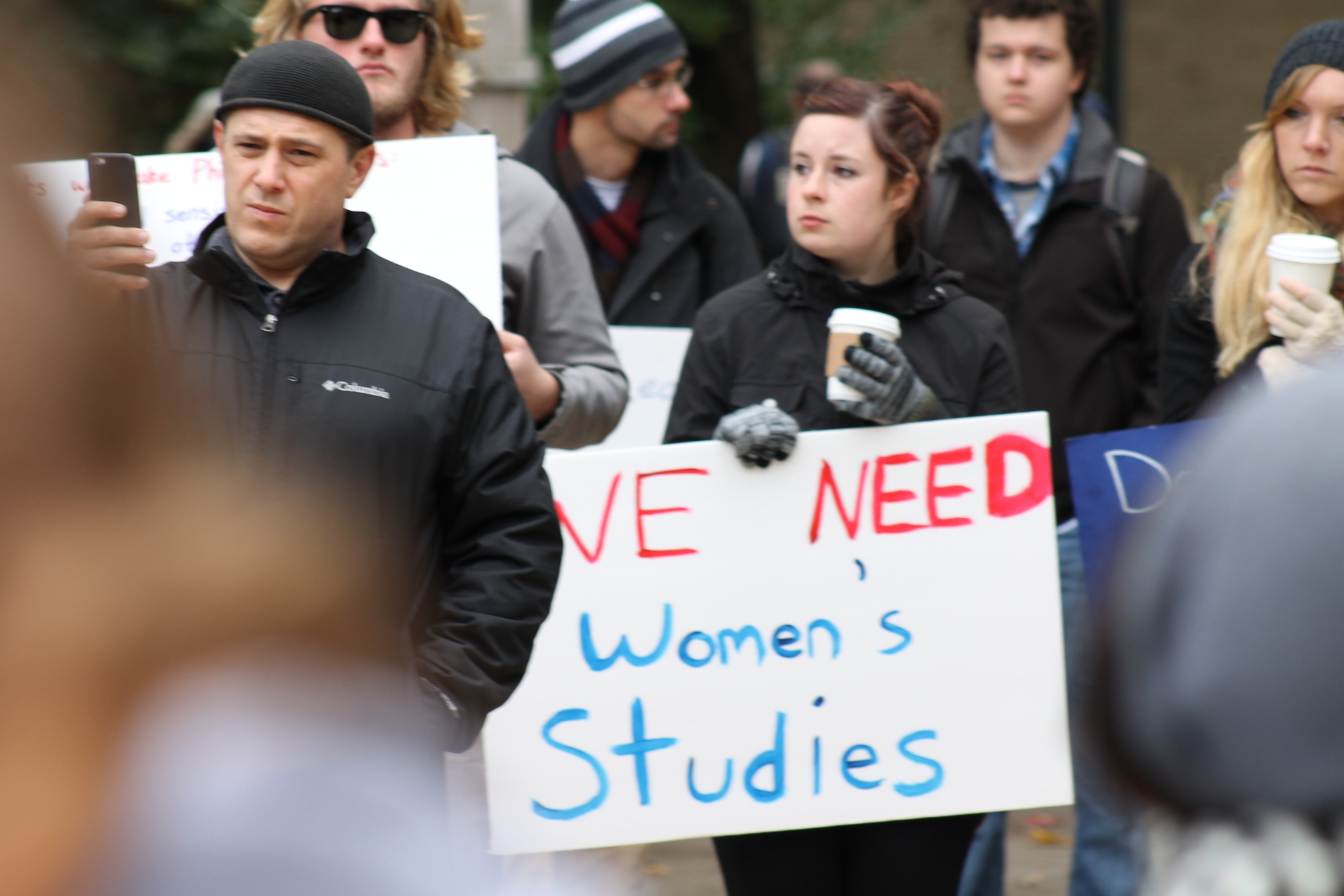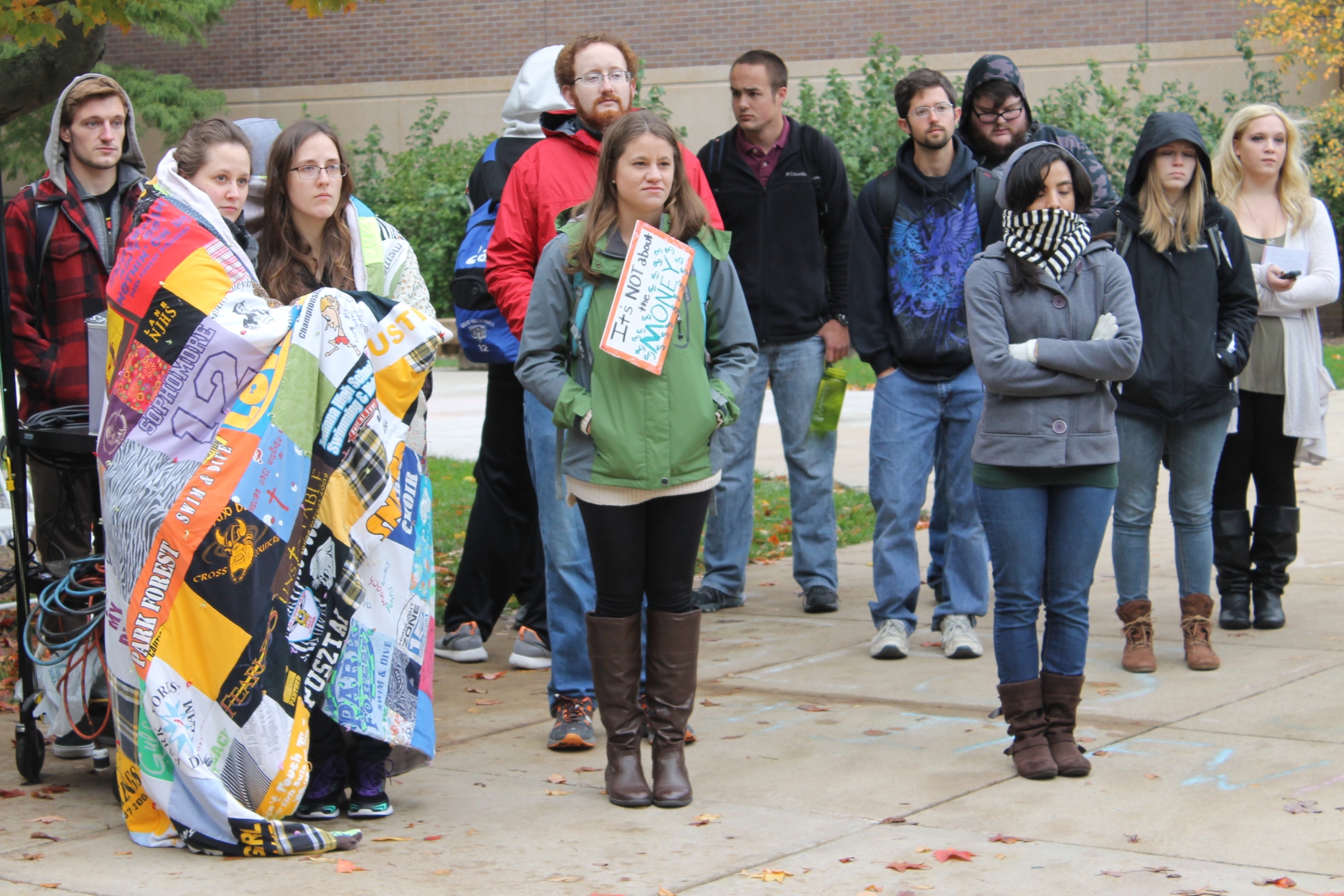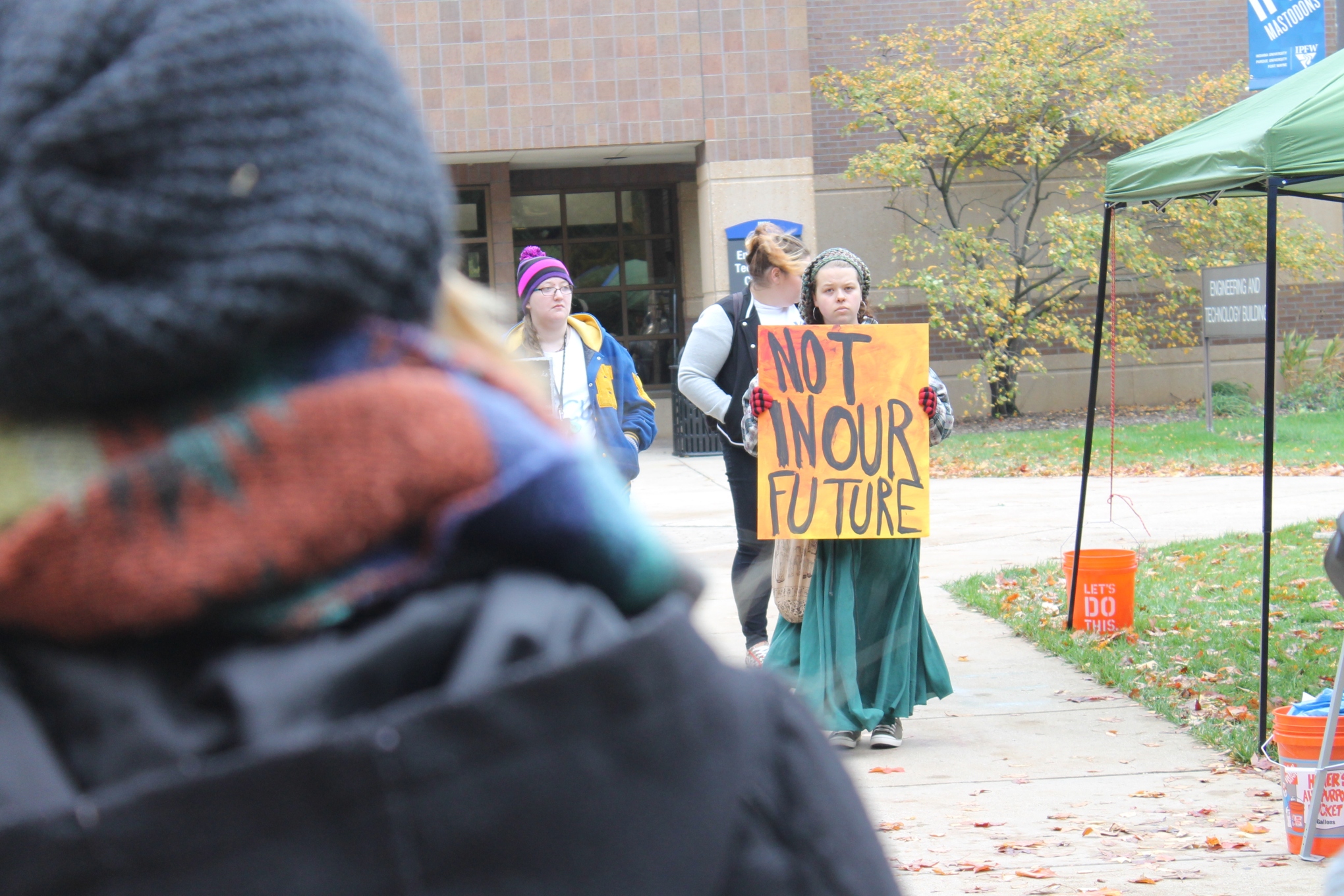This story was updated on June 24, 2016 at 9:55 a.m.
The university administration released an incomplete two-page rubric and links to a website nearly one month after a college dean, department chair, and IPFW Student Media filed open records requests for meeting memoranda, datasets, and any other documentation related to the USAP committee.
According to Rachel Hile, interim chair of the Department of Communication, she filed a record request to point out the committee’s record keeping was not “conducive to transparency.”
“In the state of Indiana, it is actually not legal for a committee to meet behind closed doors and make the decision to gut a college of a state university without any sort of accountability, without any sort or record keeping,” Hile said.
The report recommended 13 departments to be restructured, nine of which were from the College of Arts and Sciences, to save on costs. According to faculty members, the term restructuring wasn’t clearly defined in the report, and could mean merging departments together or eliminating them.
Hile also said she believes the committee is subject to the Open Door Law based on the definitions of a governing body that the Public Access Counselor provides.
“That’s why I wanted to broaden the request to call attention to the fact that there are some actual problems with the process,” Hile said. “There are a lot of people in the College of Arts and Sciences complaining about the outcome, and I think the outcome shows a clear ideological bias against a certain form of intellectual inquiry, but it’s also arrived at a process that is probably illegal.”
According to the Indiana Public Access Counselor’s Handbook, Indiana Code 5-14-1.5, Indiana’s Open Door Law, a specific amount of meeting memoranda must be kept of “governing bodies” engaged in “official action.”
The handbook also says the law requires memoranda such as date, time, and place of meeting; the members of the governing body recorded as absent or present; the general substance of all matters proposed, discussed, or decided; and a record of all votes taken, by individual members, if there is no roll call.
“The law requires you to have this specific, minimum amount of record keeping at meetings. I don’t think they have it. I know they didn’t have it when I was on the committee,” Hile said.
The code states, “Any committee directly appointed by the governing body or its presiding officer to which authority to take official action upon public business has been delegated, except for agents appointed by a governing body to conduct collective bargaining on behalf of the governing body.”
The code’s definition of official action includes six steps: receive information, deliberate, make recommendations, establish policy, make decisions, or take a final action.
“There is a lot of talk from the chancellor and the USAP committee members about how this is a very transparent process and they want everyone to know what is happening,” Hile said. “But they’re not keeping records, so that’s not even possible.”
Both Vicky Carwein, the chancellor of the university, and Barry Dupen, co-chair of the task force, said the task force did not keep minutes of their meetings, but all the other data was available online.
“We were just overwhelmed with the work. We didn’t have extra people to keep extra records,” Dupen said. “Discussions amongst ourselves were basically confidential, but the results are all completely public.”
Carwein also said there was no hidden data she was aware of. However, she also said confidentiality was maintained during the meetings in order for the members to “very openly, very candidly, and in all honesty express their views.”
“The intent of all of that is to really encourage people to express themselves freely. So in terms of some of their deliberations, to take those 24 task members and put one of them in a chair and say ‘how exactly did you vote and what was your comment?’ that wouldn’t serve the process,” Carwein said.
“In my time in higher education, this is one of the most transparent processes I have ever been involved in,” Carwein said. “There are just reams, and reams, and reams of data that they posted. The individual divisions and units actually developed their own metrics by which they wanted to be judged. There was nothing top-down about this process.”
According to the report, the recommendation was based on current enrollment trends, number of degrees awarded, and demand. Other factors such as employment outlooks and graduation rates also played a part.
Jeff Malanson, an assistant history professor and university budget committee member, said the academic departments did not come up with their own metrics, but rather USAP decided that employment outlook and graduate job placements would be used.
“While academic departments generally participated in the process of developing performance measures, it is not accurate to say that the departments came up with the metrics themselves,” Malanson said.
In response to Malanson’s claims, Carwein said, “Each of the four vice chancellors oversaw the development of metrics appropriate for and specific to the units in his or her division. Each division was able to develop metrics that were both quantitative and qualitative in nature. Those metrics were then utilized by the USAP Task Force to conduct their evaluation and develop their recommendations.”
According to Malanson, the Vice Chancellor for Academic Affairs, Carl Drummond, solicited input from academic departments for possible performance measures, but the measures proposed by the departments were largely ignored.
Eric Link, dean of the College of Arts and Sciences, sent a request to the task force asking for a variety of documents related to the recommendation to restructure departments.
The following day, Link was informed he would have to file an open records request in order to receive those files.
According to Link, he filed an open records request on May 11, asking for minutes, data sets, rubrics, scoring sheets, graphs, charts, or other instruments or data visualizations in order to see how the committee came to their conclusions.
“When the dean of the college that is targeted for the vast majority of cuts has to file an open records request to get information so he can defend the college against those cuts … this is a catastrophically bad situation,” Steve Carr, an associate professor of communication said. “USAP has been a deeply divisive initiative that has caused needless controversy on this campus. It’s pitted people against each other. USAP, as a whole, has destroyed moral. In the end, what do we have to show for it?”
IPFW Student Media filed a similar records request in person with the university on May 16 by hand-delivering the request to Christine Marcuccilli’s university mailbox. Marcuccilli, the university’s compliance officer, said she never received the request. A reporter filed another request in person May 24.
Marcuccilli’s office sent a two-page “Data Decision Making Grid” in response on June 10, 25 days after the initial request. The grid, which included five factors that would assist the committee in making decisions for each department, was not filled out.
The office declined to disclose meeting memoranda and recordings. While state agencies are free to disseminate such documents, they are permitted to withhold documents under state statute.
“It would seem to me if those two pieces of paper are the only thing that were provided to him, then the request was either unfilled, there was a whole lot of denial of the request, or documents no longer exist,” said Andrew Downs, Director of the Mike Downs Center for Indiana Politics. “The length of the request should result in more than two pieces of paper.”
Marcuccilli said the committee’s “working records,” which include items such as filled out grids or data sheets, were not retained.
“A university is a state agency, and therefore it’s important for the constituents, whether be alumni, faculty, administrator staff, students, understand what is going on within the university, in terms of decisions that its making and moving forward,” Barb Smith, an associate professor of communication, said.
According to Smith, Indiana has a law that allows a public agency “to refuse disclosure of requested records if the advisory or deliberative materials express opinions and are used for decision making.”
“If the minutes that were requested, or the reports that were requested, or the certain part of the rubric was requested are based on advisory or deliberative materials that expressed opinions of the group, and those opinions are used for decision making, those can be exempt if IPFW chooses to make them exempt,” Smith said.
“In the case of USAP, the task force made recommendations about things that should happen on the campus, not just in academic affairs, but in student affairs and athletics,” Downs said. “If those recommendations are to be taken seriously by the administration and by the campus more generally, then obviously there should be some way for people to try to get to the same conclusion that USAP got to.”
Both Hile and IPFW Student Media filed complaints with Indiana’s public access counselor.
James Burg, the dean of Education and Public Policy and chair of the USAP Facilitation Team, did not return requests for an interview by deadline.
A copy of the records request response can be found here: Data Decision-Making Grid.











